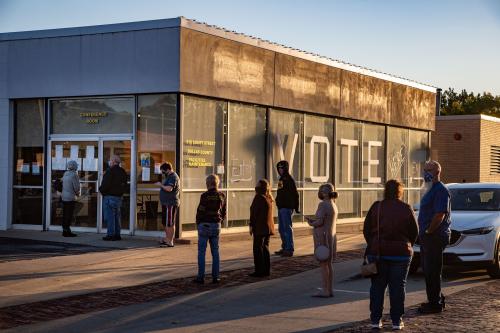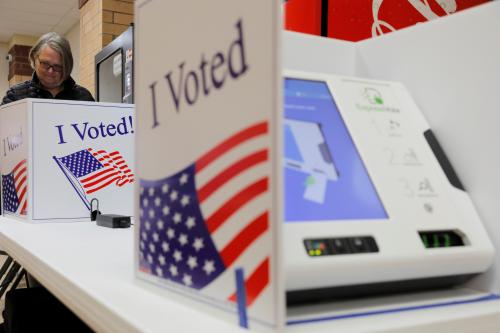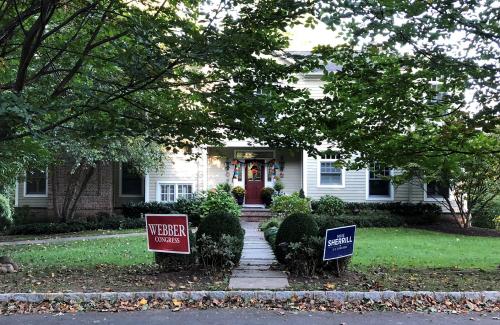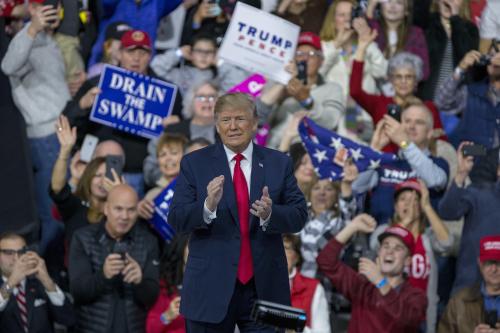This post is part of the series Race for the Senate 2018.
 Any road the Democratic Party would have to majority status in the U.S. Senate would go through Arizona. An open race between Democrat Kyrsten Sinema and Republican Martha McSally could either produce a gain for the Democrats if Sinema wins or a hold for the Republicans if McSally wins. The candidates are locked in a tight race. Most polls show Sinema and McSally within a few percentage points of each other and usually by a margin that is less than the sampling error. The Cook Political Report lists the race as a toss-up. Other interesting elements of the Arizona Senate contest are that both candidates are women and both have strong credentials from serving in the U.S. House of Representatives. Regardless of who wins, Arizona will have its first female U.S. senator after this November’s election.
Any road the Democratic Party would have to majority status in the U.S. Senate would go through Arizona. An open race between Democrat Kyrsten Sinema and Republican Martha McSally could either produce a gain for the Democrats if Sinema wins or a hold for the Republicans if McSally wins. The candidates are locked in a tight race. Most polls show Sinema and McSally within a few percentage points of each other and usually by a margin that is less than the sampling error. The Cook Political Report lists the race as a toss-up. Other interesting elements of the Arizona Senate contest are that both candidates are women and both have strong credentials from serving in the U.S. House of Representatives. Regardless of who wins, Arizona will have its first female U.S. senator after this November’s election.
What are the three most important issues in this Senate race?
Given Arizona’s location, it is not unexpected that border security would be one of the major issues of the Senate race. However, the framing of the topic by McSally is a focus on illegal drugs flowing across the border, rather than undocumented immigrants. In a related issue, national security is central to McSally’s campaign. The most famous advertisement of the campaign contrasts McSally as a former Air Force combat pilot against Sinema protesting the Iraq war while wearing a pink tutu—an issue important in a state with more than half a million veterans. Meanwhile, Sinema focuses many of her advertisements around health care, both in protecting those with preexisting medical conditions and maintaining Medicare in its current format. Health care is a key issue in Arizona, a state with the third-highest uninsured rate in the country.
What role is President Trump playing in the race?
President Donald Trump was front and center during the Republican primary contest. Martha McSally, Kelli Ward, and Joe Arpaio all made claims to being closest to the president. While President Trump did not formally endorse any of the Republican candidates, McSally in her advertisements made use of clips of Trump praising her actions. Once the general election campaign began, however, the president disappeared from McSally’s ads. However, McSally continued to tout her connections to Trump at campaign events, where she is likely to encounter mostly Republican voters. Trump endorsed McSally at a campaign rally in Mesa, a Phoenix suburb, on October 19.
What would you say is the most overlooked dynamic in this race and what might be its effect?
In a close contest, turnout is key. Sinema needs a big turnout by Democratic groups in order to win. Whether the Latino vote in Arizona will increase is a perennial question. Groups such as One Arizona continue to engage in registration efforts to get more Latinos to the polls. On another front, teachers across Arizona walked out of schools in April to protest low pay and the failure of state education funding to return to pre-recession levels. Fifty thousand teachers participated in a protest march in Phoenix, while smaller marches were held across the state. The governor and state legislature met some, but not all, of the teachers’ demands. In July, Arizona teachers gathered 270,000 signatures for a ballot initiative to increase funding for schools. The Arizona Supreme Court, however, took the initiative off the ballot saying the petition forms did not fully explain all of the potential tax changes. Whether or not this unfolding of events will affect the November elections is yet to be seen, but a protest over Republicans in the state government could spill over and affect the vote for the U.S. Senate seat. On the other hand, Republicans in the state hope to win by motivating their base with negative depictions of Democratic candidates for a variety of offices.
Has outside spending been a key component of this race and does it appear to be having an effect?
With a highly competitive, open-seat race, large sums of outside money have been directed at the Arizona Senate contest. Campaign fundraising totals at the beginning of October showed Sinema raising $10.5 million to McSally’s $7.6 million. Outside money amounted to $25 million. As is often true, most of this outside money was spent in opposition to a candidate. Both the Democratic Senatorial Campaign Committee and the National Republican Senatorial Committee invested in the Arizona race. Sinema’s campaign also was aided by national Democratic groups such as Majority Forward and Priorities USA Action. Outside money also was present in the Republican primary contest, with the Democratic-leaning Red & Gold super PAC working to defeat McSally, Defend Arizona spending money in opposition to Kelli Ward, and KelliPAC channeling funds in support of Ward.
What is the biggest weakness of each major party candidate and how could they overcome it?
The attack advertisements against Sinema focus on her more liberal record when she served in the Arizona state legislature. In contrast, Sinema depicts herself as a more moderate candidate who will work across the aisle to protect the interests of Arizona voters. The attack ads by McSally and groups that support her have led the Sinema campaign to paint McSally as someone who will say anything to be elected. McSally also faces claims that she is a flip-flopper as she moved toward Trump and adopted more conservative issue positions before the Republican primary. McSally is relying on her strong military background and the Republican leanings of Arizona’s voters to help her win the election.








Commentary
Race for the Senate 2018: Key issues in Arizona
October 25, 2018